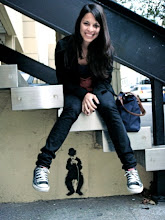
You can feel in every inch of this film that Boyle was giving it all to this project. He was invested and inspired by the city, people, colors, and stories that fill this country. As he has mentioned in some of his interviews, he is very childlike and likes “being immature on the set” (98). Therefore, filming in India must have been a playground for this mischievous grown-up. India presented itself as an obstacle course which stimulated Boyle’s ingenuity to come up with creative solutions that ultimately enhanced the final project. For example, he opted to use small digital cameras to camouflage the production and thus navigate unnoticeably through the masses of people and bureaucracy of the city. That is how, for example, he was able to film in the Taj Mahal, “where you aren’t allowed near anything” (136). If he had tried to follow the conventional path to obtain permits, he would have gotten lost in a web of bureaucracy. And thus, this scene, which provides a humorous and critical take on tourism, religion, and unique landmarks, would have been lost in paperwork.
In addition, the choice of using digital cameras allowed them to run free and completely amalgamate themselves to the beat of the city. From the opening scene, we are washed over by color and speed while Jamal, like the camera, teases authority by making his way through the cracks of the city. This free flowing camera work is combined with a wide variety of camera angles and exciting editing. We jump from a close-up of Jamal’s face to a wide view of the policemen running after Jamal, to a close-up of his feet, all in a matter of seconds. Such fast-paced editing is synchronized with an ascending drum melody that is exciting yet overwhelming, like running through the streets of India must be.
It is very interesting to see in Slumdog Millionaire the unusual combination of Boyle’s style with the city’s aesthetics. His characteristic dark undertones are in complete opposition to the façade of India, which is charged with vivid colors, music, and dance. Nevertheless, such façade undoubtedly conceals cruel and dark realities, which is why Boyle’s interpretation of the city feels incredibly honest. He repeatedly expressed in his interviews that for him, India is a country of extremes. He masterfully translated such extremes into a visual language by filling with color and light the core of the screen while concealing it into pitching black frames. This aesthetic choice illustrates the coexistence between the city’s vivid heart and the cruelties it bears.
After all these compliments about the film, I cannot leave untouched a major flaw that I noticed in the storyline which extremely bothered me while reading Boyle’s interviews. As a good businessman, Boyle noticed that interviewers and audiences responded well to the happy ending and love story. And therefore, he increasingly boosts these aspects, adding a twist that is honestly not present in the film. He sustains that the motivation of Jamal to participate in Who Wants to be a Millionaire? was love and only love. “It’s nothing to do with the money, it’s nothing to do with success or television or fame or glamour” (154). However, what is the logic behind “staying in the chair for long enough, [so] she’ll see him and they can reconnect”? (154). Latika had already seen him, why would it be different this time? Money. The truth is that without money, Latika would not run away with Jamal. She expressed it clearly when they saw each other at the gangster’s house. Her first reaction to Jamal’s invitation to run away was thinking about their lack of money: “run away, where? and live of what?” Therefore, Boyle sugar-coded the obvious reason of Jamal to join the show. He was surely in love, but what he was truly after was the money because without it he could not get the girl.
